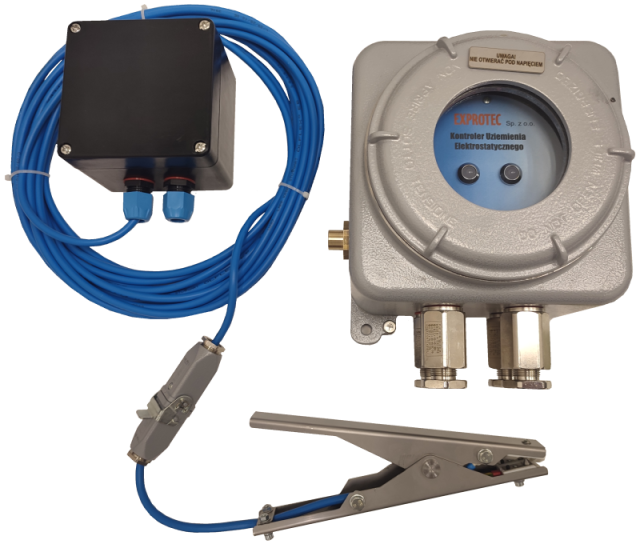The KUE-* type static earth monitoring controller is used to earth and monitor the earthing condition of road tankers, rail tankers and other tanks which may accumulate electrostatic charge on the surface during filling or emptying. The wire of the intrinsically safe measuring circuit and the earthing wire is connected to the earthed unit through a terminal clamp operated by appropriate personnel. The equipotential bonding circuit provides for obtaining the state of deactivation of the actuation relay of the KUE-* controller in the event of breaking the earthing wire connecting the KUE-* controller to the static charge equipotential bus, located within the user’s infrastructure. By attaching a terminal clamp to the earthing point of the earthed unit, the unit is earthed and the measuring circuit is closed. The measuring circuit controls the resistance of the unit’s earthing system. When the earthing resistance is below 10Ω, the actuation relay of the KUE-* controller is energised and its contacts are switched, a green light signal is emitted. The static charge accumulating during the filling or emptying of the tank is discharged into the static charge equipotential bus. If the resistance rises above 10Ω, the actuation relay is de-energised and its actuation contacts are switched, a red light signal is emitted. This also occurs if the terminal clamp is not connected to the earthing point of the unit. The controller can be used in potentially explosive atmospheres at risk of gas explosion classified as group IIC and dust explosion classified as group IIIC.
The controller unit includes a flameproof enclosure with electrical equipment for the controller, a terminal clamp with a connection socket, an 11 m cable, a polyester intrinsically safe box and a mounting bracket. In case of damage to the cable or clamps, it is possible to purchase these components as individual spare parts.

